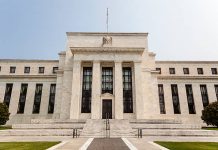The Japanese yen continues to lose ground this week. In Thursday’s North American session, USD/JPY is trading at 110.80, up 0.36% on the day. On the release front, Japanese Core Machinery Orders declined 3.9%, missing the estimate of -2.9%. This marked a 3-month high. Later in the day, Japan releases National Core CPI, which is expected to edge higher to 0.9%. In the U.S, key indicators were mixed. Unemployment claims climbed to 222 thousand, above the estimate of 216 thousand. This was the highest reading in 4 weeks. There was much better news on the manufacturing front, as Philly Fed Manufacturing Index jumped t0 34.4, crushing the estimate of 21.1 points. This was the strongest gain since February 2017.
Is the Bank of Japan looking to exit from its ultra-accommodative stimulus program? The cautious central bank will certainly move carefully. Any steps will be small and incremental in nature, in order not to rattle the markets or the yen exchange rate. The bank took one such step in April when it removed a deadline for hitting its inflation target of around 2 percent. Currently, BoJ policymakers are looking to raise bond yields from their near-zero levels as part of normalizing monetary policy. The stimulus program was introduced in 2013, when a confident BoJ Governor Kuroda claimed that he would reach the inflation target within two years. Fast forward to 2018, and the inflation target remains elusive, despite the bank spending trillions of yen in stimulus. The Japanese economy has shown some improvement, which will make it easier for the BoJ to exit from its radical easing policy. Still, traders should be prepared for small, incremental steps towards this end.
In the U.S, retail sales and core retail sales posted gains in April, although both indicators fell short of the estimates. Still, consumer spending is improving after a sluggish first quarter. Investors liked what they saw, and the US dollar was broadly higher on Tuesday. At the same time, a new concern is higher gas prices, which could put a dent in consumers’ wallets and hurt spending. Oil prices have hit their highest levels in over 3 years, and with the US leaving the Iran nuclear deal and escalating tensions in the Middle East, gasoline prices could remain at high levels.












